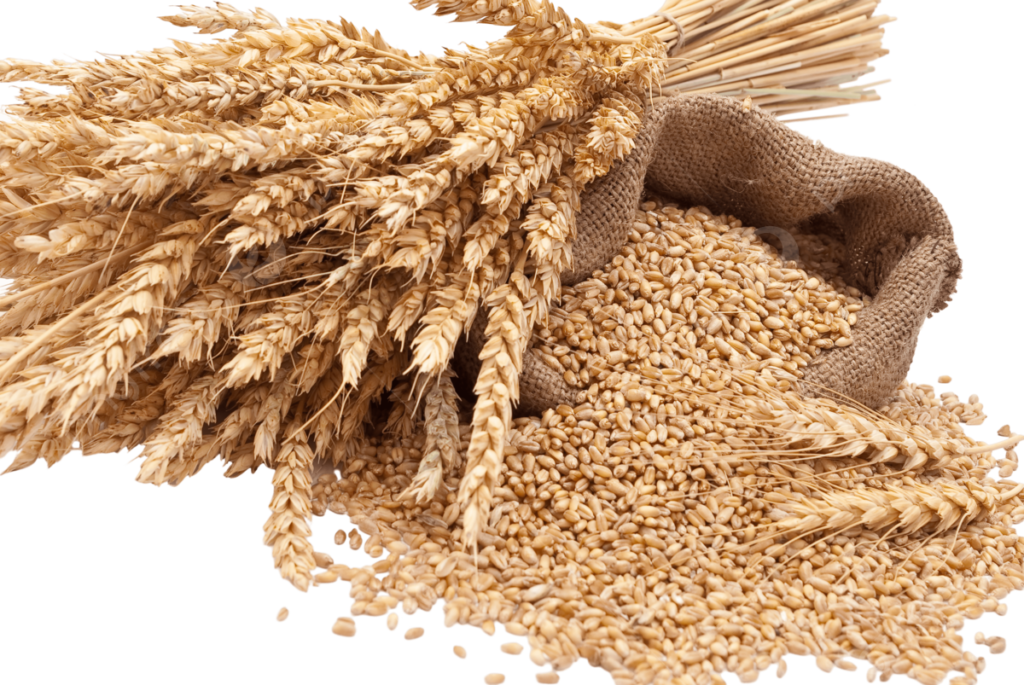Wheat is one of the most important staple crops globally, providing a significant portion of the world’s food supply. It’s a versatile grain used in a wide variety of foods and plays a central role in many diets.

Types of Wheat
- Hard Red Wheat: High in protein and gluten, hard red wheat is commonly used for making bread and other yeast-leavened products.
- Soft Red Wheat: Lower in protein and gluten, this type of wheat is ideal for making cakes, pastries, and other baked goods that require a lighter texture.
- Hard White Wheat: Similar to hard red wheat but with a milder flavor and lighter color. It’s often used for bread and brewing.
- Soft White Wheat: Lower in protein and gluten, it’s perfect for making delicate baked goods like cookies, cakes, and crackers.
- Durum Wheat: High in protein and gluten, durum wheat is used to make pasta and semolina products.
- Spelled: An ancient variety of wheat that’s gaining popularity for its nutty flavor and nutritional benefits. It’s used in bread, pasta, and other baked goods.
Nutritional Benefits of Wheat
Wheat is a rich source of essential nutrients, including:
- Carbohydrates: Wheat is high in complex carbohydrates, providing a steady source of energy.
- Fiber: Whole wheat, which includes the bran and germ, is a great source of dietary fiber. Fiber aids in digestion, helps regulate blood sugar levels and promotes heart health.
- Protein: Wheat contains a moderate amount of protein, which is essential for building and repairing tissues.
- Vitamins: Wheat is rich in B vitamins, particularly niacin, thiamine, and folate, which support metabolism and overall health.
- Minerals: Wheat provides important minerals such as iron, magnesium, and zinc.
Culinary Uses of Wheat
Wheat is incredibly versatile and can be used in various culinary applications:
- Flour: Wheat flour is a fundamental ingredient in baking, used to make bread, cakes, cookies, pastries, and more.
- Pasta: Durum wheat is milled into semolina, which is used to make pasta of various shapes and sizes.
- Breakfast Cereals: Wheat is used in many breakfast cereals, including whole grain options and processed varieties.
- Beer and Spirits: Wheat is an ingredient in certain beers, whiskeys, and other spirits, adding flavor and body to the beverages.
- Cracked Wheat and Bulgur: These are used in salads, pilafs, and side dishes, providing a chewy texture and nutty flavor.
Whole Wheat vs. Refined Wheat
- Whole Wheat: Contains all parts of the grain—the bran, germ, and endosperm. It’s more nutritious and higher in fiber than refined wheat.
- Refined Wheat: The bran and germ are removed, leaving only the starchy endosperm. It’s lower in fiber and nutrients but has a longer shelf life and a finer texture.
Fun Fact
Did you know that wheat has been cultivated for over 10,000 years?
It was one of the first crops to be domesticated by ancient civilizations in the Fertile Crescent region, laying the foundation for modern agriculture.
